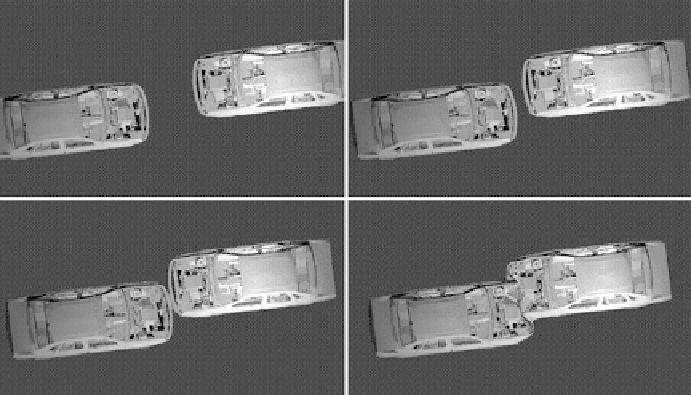Information Technology Reference
In-Depth Information
as reducing the demand for oil by improving the fuel efficiency of cars or reducing the
demand for silver by replacing conventional photography with digital photography.
A computer simulation may produce erroneous results for two fundamentally different
reasons. The program may have a bug in it, or the model upon which the program is
based may be flawed.
Verification
is the process of determining if the computer program
correctly implements the model.
Validation
is the process of determining if the model is
an accurate representation of the real system [54]. In this section we focus on the process
of validation.
One way to validate a model is to make sure it duplicates the performance of the ac-
tual system. For example, automobile and truck manufacturers create computer models
of their products (Figure 8.8). They use these models to see how well vehicles will per-
form in a variety of crash situations. Crashing an automobile on a computer is faster
and much less expensive than crashing an actual car. To validate their models, manufac-
turers compare the results of crashing an actual vehicle with the results predicted by the
computer model.
Validating a model that predicts the future can introduce new difficulties. If we
are predicting tomorrow's weather, it is reasonable to validate the model by waiting
until tomorrow and seeing how well the prediction held up. However, suppose you are
a scientist using a global warming model to estimate what the climate will be like 50
years from now. You cannot validate this model by comparing its prediction with reality,
because you cannot afford to wait 50 years to see if its prediction comes true. However,
you can validate the model by using it to
predict the present
.
FIGURE 8.8
A computer simulation of an automobile accident can reveal about the same

